Embarking on a culinary journey to explore the world of Dutch cheeses is an adventure full of delightful surprises and delicious flavors. The cheese in Holland boasts a rich history dating back to ancient times and is deeply rooted in Dutch culture. In this post, we’ll take you on a tasting tour of 10 types of Dutch cheese, each with its unique taste and texture. So, if you’re ready to indulge your taste buds and dive into the universe of Holland cheeses, read on and prepare to be amazed!
The history of cheese of Holland can be traced back to ancient Roman times, and it has been an essential part of the Dutch diet ever since. Over the years, Holland cheese production has evolved, and today, the Netherlands is one of the world’s largest cheese producers and exporters. When visiting the country, particularly Amsterdam, cheese tasting is an absolute must-do. The city is home to countless cheese shops and tasting rooms, where you can sample a wide variety of Dutch cheeses and learn about their unique characteristics and production methods.
1 – Gouda

Gouda, named after the city of Gouda in the Netherlands, is one of the most popular Dutch cheeses worldwide. With its creamy, mild taste and smooth texture, it’s loved by cheese connoisseurs and casual snackers alike. Gouda is produced from cow’s milk and comes in different age varieties, ranging from young (jong) to extra mature (extra belegen). As it ages, its flavor becomes more robust and complex, and its texture turns firmer and slightly crumbly. Gouda is often coated in wax, which helps protect and preserve the cheese during aging. Additionally, Gouda pairs wonderfully with fruits like apples and pears, as well as with crusty bread and cured meats.
2 – Edam
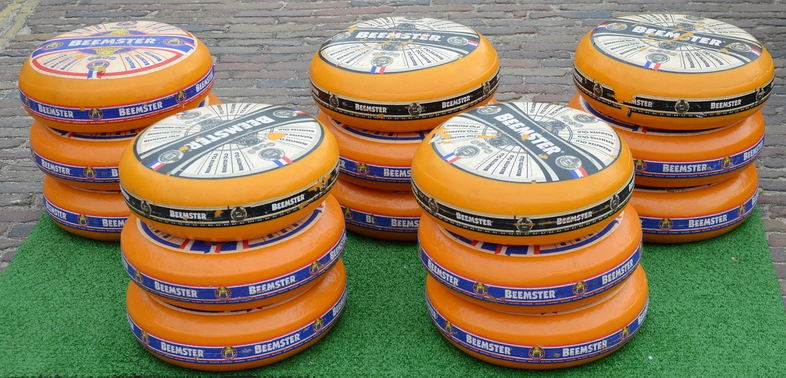
Edam is another famous cheese in Holland, known for its distinctive round shape and red wax coating. It’s a semi-hard cheese with a mellow, slightly sweet taste and a creamy, elastic texture. Edam is made from cow’s milk, and its lower fat content makes it a healthier option for those watching their calorie intake. This cheese is excellent for melting and is often used in sandwiches, salads, and various dishes. The production process involves pressing and brining, which contributes to Edam’s unique flavor and texture.
3 – Maasdam
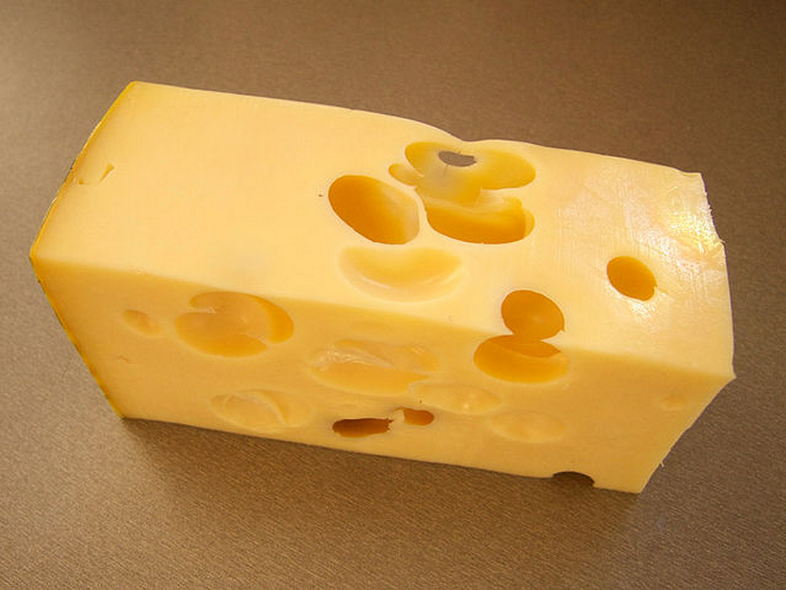
Maasdam is a Dutch cheese that resembles Swiss Emmental, characterized by its large holes and distinctive nutty flavor. It’s a semi-hard cheese made from cow’s milk and boasts a creamy, supple texture. Maasdam is produced using a unique process, which involves washing the curd and allowing the cheese to ripen in a warm, humid environment. This method results in the development of gas bubbles that create Maasdam’s signature holes. Additionally, this process contribute to its characteristic flavor. Furthermore, Maasdam can be enjoyed with fresh or dried fruits, nuts, and a variety of crackers or breads.
4 – Leerdammer
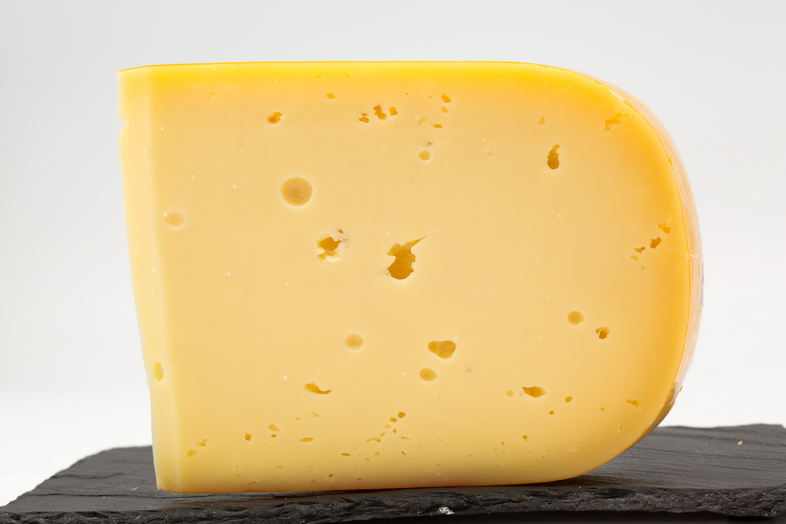
Leerdammer is another Holland cheese that closely resembles Swiss-style cheeses. It’s a semi-hard cheese with a sweet, nutty flavor and a smooth, elastic texture. Like Maasdam, Leerdammer is known for its characteristic holes, which are formed during the ripening process. It’s made from cow’s milk and has a pale yellow color. Leerdammer is an excellent melting cheese, making it a popular choice for sandwiches and hot dishes.
5 – Beemster
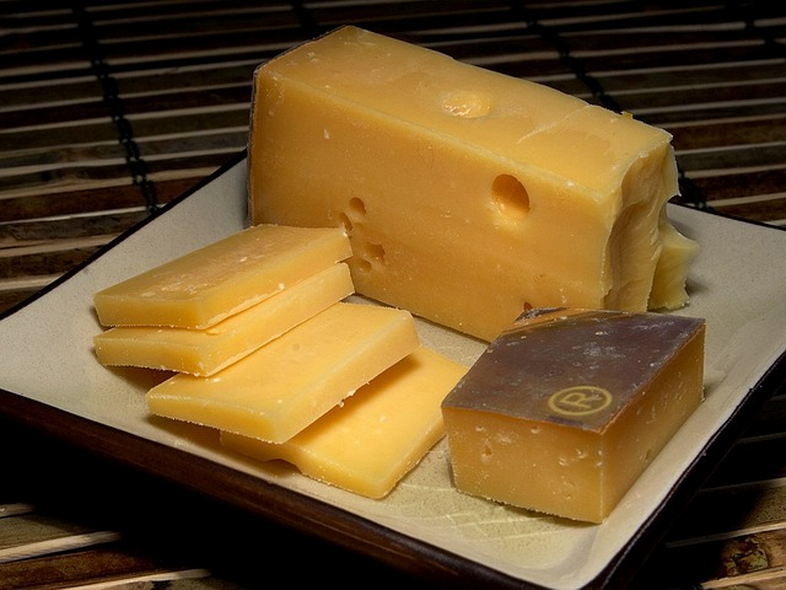
Originating from the Beemster Polder, a UNESCO World Heritage Site in the Netherlands, Beemster cheese delights with its creamy, rich taste. As a semi-hard cheese made from cow’s milk, it comes in different age varieties, each offering its unique flavor and texture. Beemster’s taste grows more robust and complex as it ages. The production process involves pressing and brining, followed by a lengthy maturation period in historic warehouses. Also, Beemster cheese can be served on a cheese platter with fruits, nuts, and a glass of your favorite wine, or melted in fondue.
6 – Limburger
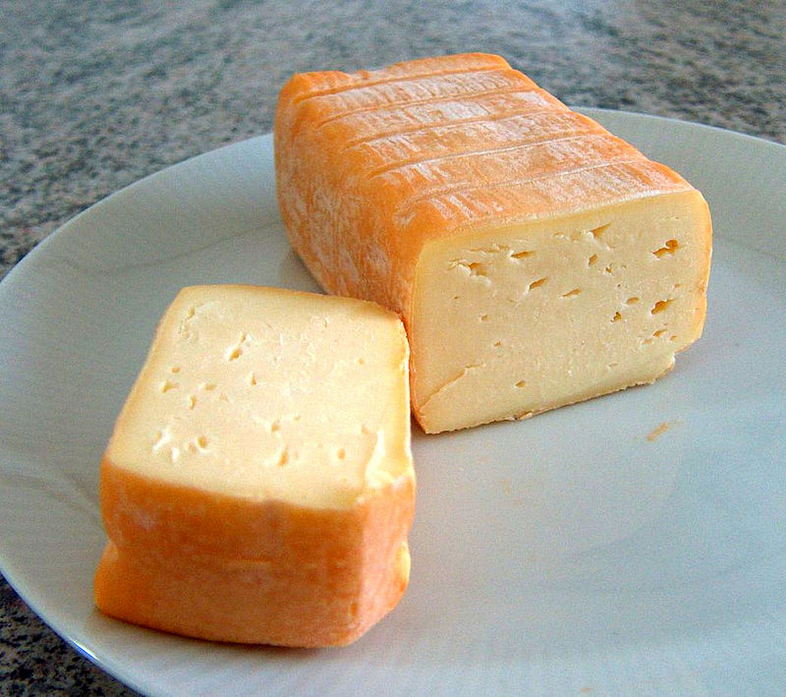
Limburger is a cheese of Holland known for its pungent aroma and strong, tangy flavor. It’s a soft, washed-rind cheese made from cow’s milk and has a distinctive orange-brown rind. The production process involves washing the cheese with a special brine solution, which encourages the growth of bacteria responsible for Limburger’s unmistakable smell. Despite its infamous odor, Limburger has a creamy, buttery texture and is often enjoyed with dark bread and sliced onions.
7 – Boerenkaas
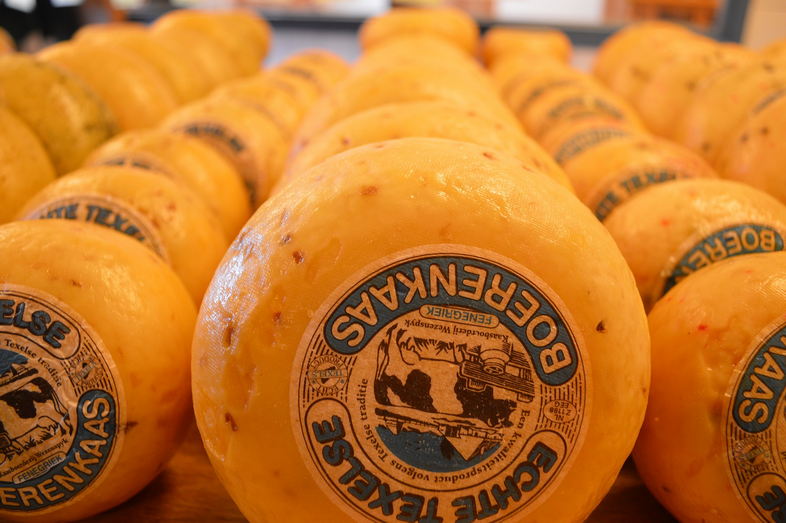
Boerenkaas, or “farmer’s cheese,” is a Dutch cheese made from raw, unpasteurized cow’s milk, giving it a rich, robust flavor. This semi-hard cheese is produced on small farms throughout the Netherlands and is available in various age varieties, from mild and creamy to sharp and crumbly. Boerenkaas is often coated in wax or cloth to protect and preserve the cheese during the aging process. Not to mention, Boerenkaas pairs well with robust red wines, whole grain crackers, and a variety of cured meats.
8 – Old Amsterdam
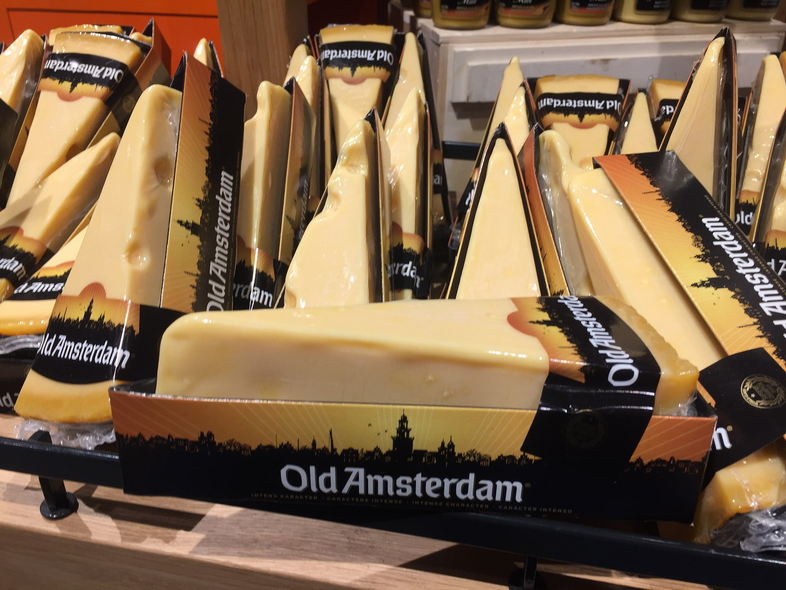
Old Amsterdam is a well-known Holland cheese characterized by its aged Gouda flavor and deep amber color. Moreover, it’s a hard cheese with a rich, robust taste and a slightly crumbly texture. Made from cow’s milk, Old Amsterdam undergoes a special ripening process, which results in its intense flavor and distinctive appearance. This cheese is especially perfect for cheese boards, sandwiches, and as a flavorful addition to various dishes.
9 – Geitenkaas
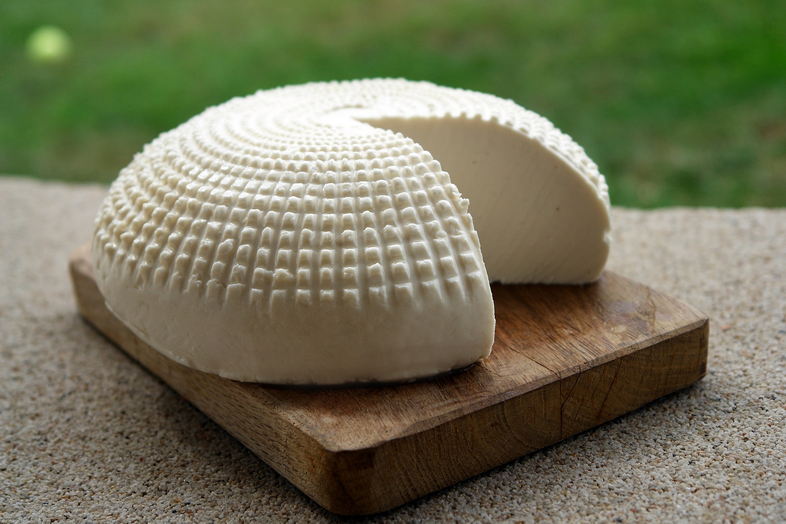
Geitenkaas, or Dutch goat cheese, is a popular cheese in Holland made from goat’s milk. It’s a soft to semi-hard cheese with a tangy, slightly sweet flavor and a smooth, creamy texture. Geitenkaas is available in various forms, including fresh, aged, and flavored varieties. Due to its unique taste and nutritional benefits, such as being lower in fat and easier to digest than cow’s milk cheese, Geitenkaas has become increasingly popular in recent years. It’s a versatile cheese that can be enjoyed on its own, in salads, or as a topping for pizzas and sandwiches.
10 – Bluefort

Bluefort is a Dutch cheese inspired by traditional blue cheeses like Roquefort and Gorgonzola. It’s a semi-soft cheese with a creamy, slightly crumbly texture and a bold, tangy flavor. Made from cow’s milk, Bluefort is injected with Penicillium roqueforti mold during the production process, which gives it its characteristic blue veins and sharp taste. This cheese is excellent for cheese boards, salads, and as an ingredient in various dishes, such as pasta and risotto. Lastly, Bluefort cheese can be enjoyed with a drizzle of honey, some fresh fruits, or added to a salad for a strong, tangy flavor.
The world of Dutch cheese offers a diverse and mouth-watering range of flavors and textures that cheese enthusiasts will surely adore. From the mild and creamy Gouda to the pungent and tangy Limburger, there’s a Dutch cheese to suit every palate. When visiting Amsterdam or any other part of the Netherlands, don’t miss the opportunity to sample these delicious Holland cheeses at local cheese shops and tasting rooms. You’ll not only learn about the fascinating history and production processes behind each cheese but also discover new favorites that you’ll be eager to share with your friends and family back home. So, next time you find yourself in the land of windmills and tulips, make sure to embark on a flavorful journey to explore the world of Dutch cheese – you won’t be disappointed!
FAQs
Q: How should I store Dutch cheeses?
A: To preserve their quality and flavor, Dutch cheeses should be stored in the refrigerator, wrapped in cheese paper or wax paper to allow them to breathe. Hard and semi-hard cheeses can also be stored in airtight containers. Make sure to keep them away from strong-smelling foods to prevent flavor transfer.
Q: What is the best way to serve Dutch cheeses?
A: Dutch cheeses can be served in various ways, depending on the type and occasion. For a cheese platter, arrange a selection of different cheeses along with crackers, fresh or dried fruits, nuts, and other accompaniments. You can also enjoy Dutch cheeses in sandwiches, salads, or as ingredients in cooked dishes.
Q: Can I eat the rind of Dutch cheeses?
A: It depends on the type of cheese and personal preference. The rind of some Dutch cheeses, like Gouda and Edam, is typically waxed and not meant for consumption. However, the rind of other cheeses, like Geitenkaas and Bluefort, is generally edible. If you’re unsure, it’s best to remove the rind before eating.
Q: How do I know which Dutch cheese to pair with different wines or beers?
A: When pairing Dutch cheeses with wines or beers, consider matching the intensity of flavors. For example, mild cheeses like Gouda and Edam pair well with lighter wines and beers, while stronger cheeses like Bluefort and Limburger are better suited to more robust drinks. Experimenting with different combinations can help you find your favorite pairings.

